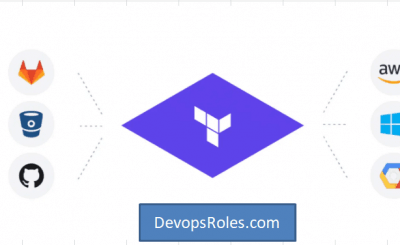AWS Lambda has become a cornerstone of serverless computing, offering incredible scalability and cost-effectiveness. However, cold starts – the delay experienced when invoking a Lambda function for the first time – can significantly impact application performance and user experience. This is where AWS Lambda SnapStart emerges as a game-changer. This in-depth guide will explore how to leverage AWS Lambda SnapStart, integrating it seamlessly with Infrastructure as Code (IaC) and Continuous Integration/Continuous Delivery (CI/CD) pipelines for optimal performance and streamlined deployments. We’ll cover everything from basic setup to advanced optimization strategies, ensuring your serverless applications run smoothly and efficiently.
Table of Contents
Understanding AWS Lambda SnapStart
AWS Lambda SnapStart is a powerful feature that dramatically reduces Lambda function cold start times. Instead of starting from scratch each time, SnapStart creates a pre-warmed execution environment, significantly shortening the invocation latency. This translates to faster response times, improved user experience, and more consistent performance, particularly crucial for latency-sensitive applications.
How SnapStart Works
SnapStart works by creating a snapshot of the function’s execution environment. When a function is invoked, instead of initializing the environment from scratch, AWS Lambda uses this snapshot to quickly bring the function online. This dramatically minimizes the time it takes for the function to start processing requests.
Benefits of Using SnapStart
- Reduced Cold Start Latency: Experience drastically shorter invocation times.
- Improved User Experience: Faster responses lead to happier users.
- Enhanced Application Performance: Consistent performance under load.
- Cost Optimization (Potentially): While SnapStart itself doesn’t directly reduce costs, the improved performance can lead to more efficient resource utilization in some cases.
Integrating AWS Lambda SnapStart with Infrastructure as Code
Managing your AWS infrastructure manually is inefficient and error-prone. Infrastructure as Code (IaC) tools like Terraform or CloudFormation provide a robust and repeatable way to define and manage your infrastructure. Integrating AWS Lambda SnapStart with IaC ensures consistency and automation across environments.
Implementing SnapStart with Terraform
Here’s a basic example of how to enable AWS Lambda SnapStart using Terraform:
resource "aws_lambda_function" "example" {
filename = "function.zip"
function_name = "my-lambda-function"
role = aws_iam_role.lambda_role.arn
handler = "main.handler"
runtime = "nodejs16.x"
environment {
variables = {
MY_VARIABLE = "some_value"
}
}
# Enable SnapStart
snap_start {
enabled = true
}
}This Terraform configuration creates a Lambda function and explicitly enables SnapStart. Remember to replace placeholders like `”function.zip”`, `”my-lambda-function”`, etc., with your actual values. You’ll also need to define the IAM role (`aws_iam_role.lambda_role`) separately.
Implementing SnapStart with AWS CloudFormation
Similar to Terraform, you can enable AWS Lambda SnapStart within your CloudFormation templates. The relevant property is usually within the Lambda function resource definition. For example:
Resources:
MyLambdaFunction:
Type: AWS::Serverless::Function
Properties:
Handler: index.handler
Runtime: nodejs16.x
CodeUri: s3://my-bucket/my-lambda.zip
Role: arn:aws:iam::YOUR_ACCOUNT_ID:role/lambda_execution_role
SnapStart:
Enabled: trueCI/CD Pipelines and AWS Lambda SnapStart
Integrating AWS Lambda SnapStart into your CI/CD pipeline ensures that every deployment includes this performance enhancement. This automation prevents manual configuration and guarantees consistent deployment of SnapStart across all environments (development, staging, production).
CI/CD Best Practices with SnapStart
- Automated Deployment: Use your CI/CD tools (e.g., Jenkins, GitHub Actions, AWS CodePipeline) to automatically deploy Lambda functions with SnapStart enabled.
- Version Control: Store your IaC templates (Terraform or CloudFormation) in version control (e.g., Git) for traceability and rollback capabilities.
- Testing: Thoroughly test your Lambda functions with SnapStart enabled to ensure functionality and performance.
- Monitoring: Monitor your Lambda function invocations and cold start times to track the effectiveness of SnapStart.
Advanced Considerations for AWS Lambda SnapStart
While AWS Lambda SnapStart offers significant benefits, it’s important to understand some advanced considerations:
Memory Allocation and SnapStart
The amount of memory allocated to your Lambda function impacts SnapStart performance. Larger memory allocations can lead to slightly larger snapshots and, potentially, marginally longer startup times. Experiment to find the optimal balance between memory and startup time for your specific function.
Function Size and SnapStart
Extremely large Lambda functions may experience limitations with SnapStart. Consider refactoring large functions into smaller, more manageable units to optimize SnapStart effectiveness. The size of the function’s deployment package directly influences the size of the SnapStart snapshot. Larger packages may lead to longer snapshot creation times.
Layers and SnapStart
Using Lambda Layers is generally compatible with SnapStart. However, changes to the layers will trigger a new snapshot creation. Ensure your layer updates are thoroughly tested to avoid unintended consequences.
Debugging SnapStart Issues
If you encounter problems with SnapStart, AWS CloudWatch logs are a crucial resource. They provide insights into function execution, including details about SnapStart initialization. Check CloudWatch for any errors or unusual behavior.
Frequently Asked Questions
Q1: Does SnapStart work with all Lambda runtimes?
A1: SnapStart compatibility varies based on the Lambda runtime. Check the AWS documentation for the most up-to-date list of supported runtimes. Support is constantly expanding, so stay informed about the latest additions.
Q2: How much does SnapStart cost?
A2: There’s no additional charge for using AWS Lambda SnapStart. The cost remains the same as standard Lambda function invocations.
Q3: Can I disable SnapStart after enabling it?
A3: Yes, you can easily disable SnapStart at any time by modifying your Lambda function configuration through the AWS console, CLI, or IaC tools. This gives you flexibility to manage SnapStart usage based on your application’s needs.
Q4: What metrics should I monitor to assess SnapStart effectiveness?
A4: Monitor both cold start and warm start latencies in CloudWatch. You should observe a substantial reduction in cold start times after implementing AWS Lambda SnapStart. Pay close attention to p99 latencies as well, to see the impact of SnapStart on tail latency performance.
Conclusion
Optimizing the performance of your AWS Lambda functions is crucial for building responsive and efficient serverless applications. AWS Lambda SnapStart offers a significant performance boost by reducing cold start times. By integrating AWS Lambda SnapStart with your IaC and CI/CD pipelines, you can ensure consistent performance across all environments and streamline your deployment process.
Remember to monitor your function’s performance metrics and adjust your configuration as needed to maximize the benefits of AWS Lambda SnapStart. Investing in understanding and implementing SnapStart will undoubtedly enhance the speed and reliability of your serverless applications. For more information, consult the official AWS Lambda SnapStart documentation and consider exploring the possibilities with Terraform and AWS CloudFormation for streamlined infrastructure management.Thank you for reading the DevopsRoles page!

